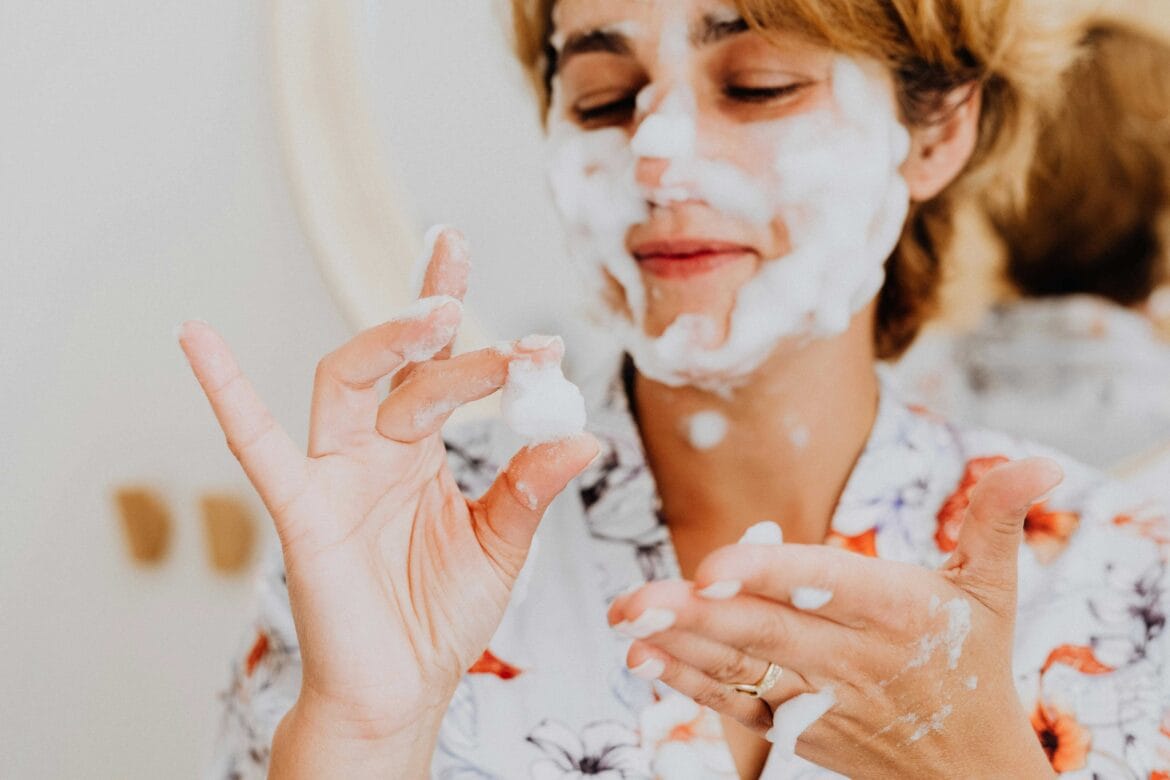Hey there! Let’s talk about something super important for healthy, glowing skin—japanese face wash.
It’s no secret that keeping your skin clean is the foundation of great skin care.
Trust us, we’ve been living in Japan for years, soaking up all the secrets of Japanese beauty routines, and face washing is a big deal here. It’s not just about removing dirt; it’s about taking care of your skin like a precious work of art.
In this guide, we’ll walk you through everything you need to know about finding the best Japanese face wash for your skin. Whether you’ve got oily skin, dry patches, or just want to know what makes Japanese products so special, we’ve got you covered.
By the end, you’ll know exactly what to use and how to use it to keep your skin looking amazing every single day.
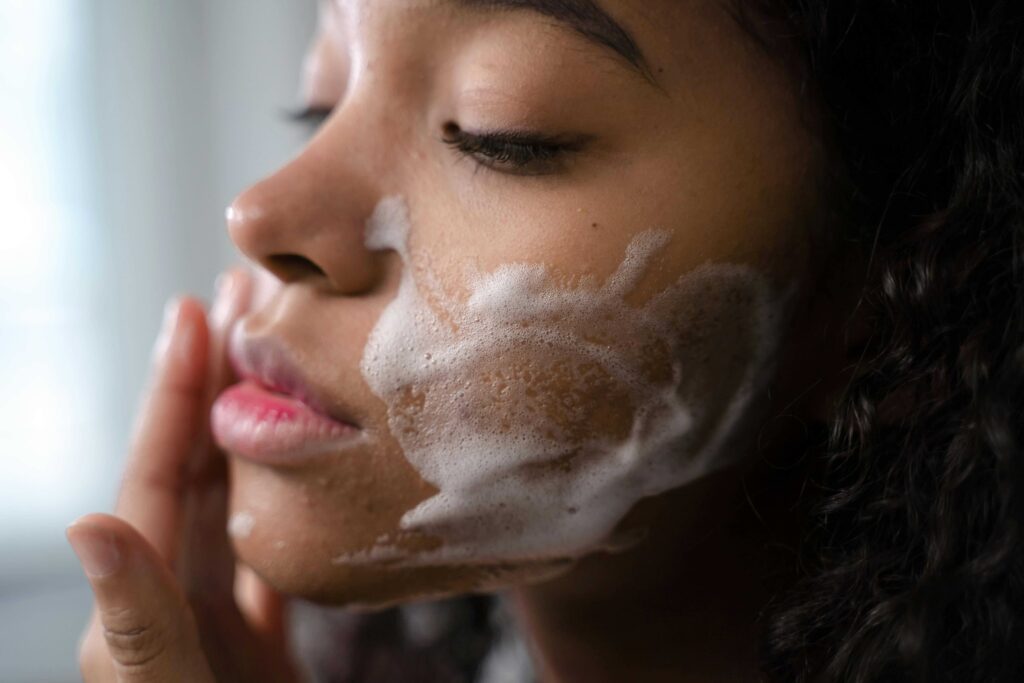
1. Understanding Japanese Face Washes
1.1 What Makes Japanese Face Washes Unique?
Okay, let’s get straight to it—why are Japanese face washes so unique?
First off, they’re all about being gentle but super effective. Here in Japan, we’ve learned that skin care isn’t just a routine; it’s a ritual.
Japanese face washes are the best mix of tradition and smart ideas. Think foaming nets for super fluffy lather and powders that clean and exfoliate in one step. It makes washing your face feel fancy.
Once you try these face washes, you’ll never go back. We never went back.
1.2 The Importance of Double Cleansing in Japanese Skin care
If you’ve never heard of double cleansing, let us fill you in.
The idea is simple: you use a makeup remover or cleansing oil first to get rid of makeup, sunscreen, and other oil-based impurities.
Then you follow up with a face wash to clean water-based dirt like sweat and dead skin cells. It’s like giving your skin a two-step spa treatment every day.
The holy grail of Japanese skin care, you can say. After a long day here in Tokyo, where humidity can be harsh, double cleansing leaves our skin feeling fresh and perfectly clean. Double cleansing with the right Japanese face wash is the way to go.
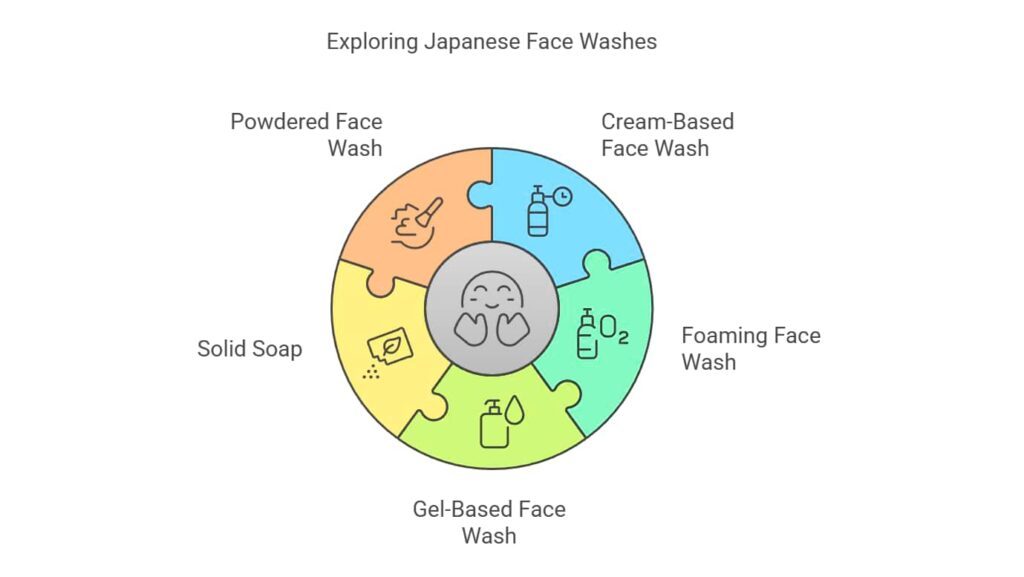
3. Types of Japanese Face Washes
Let’s talk about the exciting world of Japanese face washes! Over the years, we’ve tried countless products here in Japan and learned how each type works for different skin needs. Here’s a breakdown to help you choose your perfect match!
3.1 Cream-Based Face Wash
Cream-based face washes are perfect for those who want a gentle, hydrating cleanse. These rich formulas are ideal for normal to combination skin and work best in drier seasons.
- Skin type: Normal or combination skin.
- Key benefits: Provides moisture and nourishment while cleansing. Often includes mild exfoliants for added smoothness.
- When to use: Great during winter or when your skin feels extra dry.
Personal tip: Look for creams with natural ingredients like rice bran or camellia oil for added hydration and softness.
3.2 Foaming Face Wash
Foaming face washes are incredibly convenient and work wonders for sensitive or dry skin. They create a light, fluffy foam that cleans gently without irritating your skin.
- Skin type: Dry or sensitive skin.
- Key benefits: Pre-made foam is easy to use and provides a deep but gentle cleanse.
- When to use: Perfect for quick morning routines or after a long, tiring day.
Personal tip: Use a foaming net to create a dense, luxurious foam for an even better cleanse.
3.3 Gel-Based Face Wash
Gel-based face washes are a refreshing option, especially for those with oily or acne-prone skin. They provide a cooling cleanse that leaves your skin feeling fresh and non-greasy.
- Skin type: Oily or acne-prone skin.
- Key benefits: Removes excess sebum while keeping the skin balanced. Available in foaming and non-foaming formulas.
- When to use: Best for hot, humid days or post-workout refreshment.
Personal tip: Rinse thoroughly to avoid leaving any residue, especially with foaming gels.
3.4 Solid Soap
Solid soaps are an eco-friendly, effective option for oily and combination skin. They’re often made with natural ingredients and provide a thorough cleanse without harsh chemicals.
- Skin type: Oily or combination skin.
- Key benefits: Deep cleansing with natural ingredients like charcoal or green tea.
- When to use: Great for everyday use or as part of a minimalist skin care routine.
Personal tip: Store your solid soap in a dry, ventilated area to make it last longer.
3.5 Powdered Face Wash
Powdered face washes are unique and ideal for dull or uneven skin. These dry formulas activate with water, providing gentle exfoliation alongside cleansing.
- Skin type: Dull or uneven skin tone.
- Key benefits: Exfoliates gently while removing impurities. Enzyme-based powders target dead skin cells effectively.
- When to use: Perfect for travel or when your skin needs a little extra care, like after sun exposure or during winter.
Personal tip: Mix with just enough water to create a smooth paste, and avoid scrubbing too hard for a gentle exfoliation.
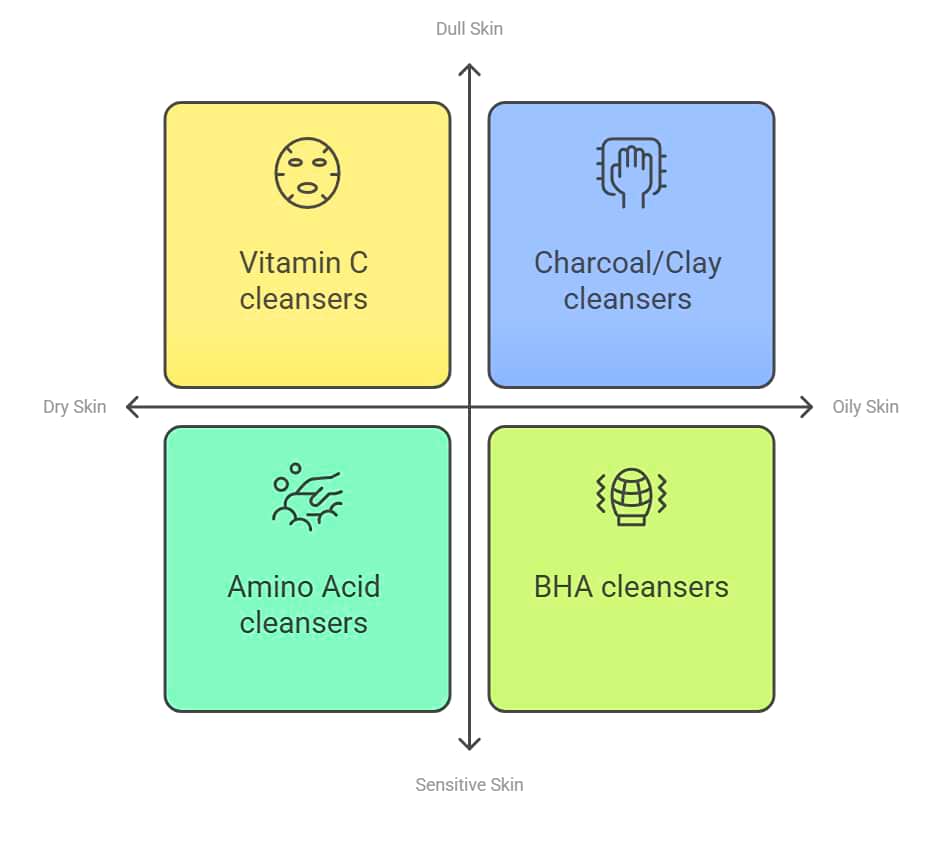
4. Choosing the Right Japanese Face Wash for Your Skin Concerns
Japanese skin care is all about gentle, effective formulas that work with your skin instead of against it. Let’s figure out the best face wash for your unique needs, inspired by trusted J-beauty ingredients and philosophies.
4.1 For Dry Skin
If your skin feels tight, flaky, or just thirsty, here’s what to look for:
- Hyaluronic Acid: A hydration hero that locks in moisture (Hada Labo’s multi-layered formulas are a must-try).
- Ceramides: Strengthen your skin barrier to keep dryness away (Curel is amazing for this).
- Nourishing Oils: Olive or camellia oil in cleansers melt away dirt without drying out your skin.
Avoid: Harsh sulfates or alcohol-heavy formulas—they’ll only make dryness worse.
J-Beauty Insight: Brands like DHC and Kanebo use lipid-rich formulas that mimic your skin’s natural oils, leaving it soft and supple.
Our Tip: Start with an oil-based cleanser to protect your skin barrier, then follow with a creamy wash. It takes consistency, but it works wonders for flaky skin!
4.2 For Oily Skin
Oily skin can be tricky, but with the right ingredients, you can keep shine under control:
- Charcoal/Clay: Absorbs excess sebum and cleans deep (Biore’s charcoal washes are a fan favorite).
- Salicylic Acid: Unclogs pores and reduces oil production without stripping your skin.
- Green Tea Extract: Calms inflammation and balances shine with antioxidants.
Avoid: Heavy creams or abrasive scrubs—stick with lightweight gels or foams.
J-Beauty Insight: Shiseido Uno and Rosette use ingredients like kaolin clay and menthol to refresh and balance oily skin.
Our Tip: Don’t shy away from oil cleansers! Start with a gentle oil wash to dissolve sebum, then follow with a foaming cleanser for a thorough, balanced clean.
4.3 For Sensitive Skin
If your skin reacts to everything, you’ll love these gentle options:
- Amino Acids: These mild surfactants clean without irritation (Fancl’s powder-to-foam washes are amazing).
- Calming Botanicals: Aloe vera, centella asiatica, and chamomile are lifesavers for redness.
- Fragrance-Free Formulas: Curel and Minon avoid irritants, keeping things ultra-mild.
Avoid: Essential oils, alcohol, and synthetic fragrances that can trigger reactions.
J-Beauty Insight: Hada Labo and Kanebo Freeplus focus on minimal ingredient lists and pH-balanced formulas to protect sensitive skin.
Our Tip: Keep it simple. Patch-test new products and stick to gentle routines. Cream cleansers and micellar waters work wonders for calming reactive skin.
4.4 For Dull Skin
Want that lit-from-within glow? Here’s what to use:
- Vitamin C: Brightens and evens out your skin tone (Shiseido’s brightening lines are packed with it).
- Rice Bran: Gently exfoliates and enhances radiance, a classic in Japanese skin care.
- Enzymes: Papain and bromelain dissolve dead skin cells for smoother, glowing skin.
Avoid: Over-exfoliating—stick to gentle products 2–3 times a week.
J-Beauty Insight: Brands like SK-II and Koh Gen Do combine fermentation science with natural extracts to bring dull skin back to life.
Our Tip: Dull skin often needs hydration too. Pair a brightening wash with a hydrating toner (like Hada Labo’s) to achieve that bouncy, glowing “mochi skin.”
4.5 For Clogged Pores
If congestion and blackheads are your main issue, here’s how to tackle them:
- BHA (Beta Hydroxy Acid): Salicylic acid penetrates pores to clear debris.
- Kaolin Clay: Gently absorbs impurities without being too harsh.
- Tea Tree Oil: A natural antimicrobial to prevent breakouts.
Avoid: Thick creams or comedogenic oils that trap dirt and clog pores.
J-Beauty Insight: Biore and Rosette specialize in pore-focused formulas that cleanse deeply without irritating your skin.
Our Tip: Use a BHA-based cleanser nightly and follow up with a niacinamide serum. For a gentle weekly refresh, try enzyme powders like Kanebo Suisai—they’re effective and non-irritating!
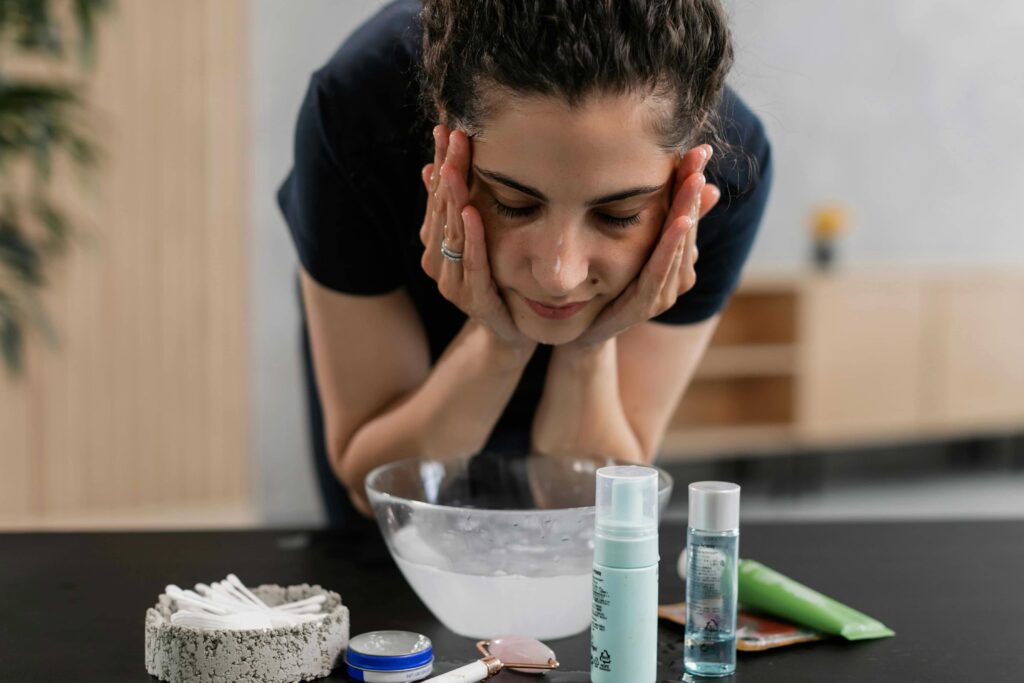
5. Proper Technique for Using Japanese Face Washes
Cleansing is a ritual for japanese skin care healthy skin. Let’s go through the steps together:
5.1 Preparing the Skin
Prepping your skin is key for a good cleanse. Here’s how to get started:
- Wash Your Hands: Always start with clean hands to avoid spreading bacteria.
- Remove Makeup or Sunscreen: Use an oil-based cleanser first if needed (DHC’s Deep Cleansing Oil is a favorite!).
- Rinse with Lukewarm Water: Splash your face with warm water to soften your skin and prep pores.
Our Tip: Think of this as hitting the “reset” button for your skin. Lukewarm water also helps everything work better!
5.2 Creating the Perfect Foam
Rich, fluffy foam isn’t just satisfying—it protects your skin from harsh scrubbing. Here’s how to do it:
- Start Small: Use a pea-sized amount of cleanser and add water gradually as you lather.
- Check the Foam: A good foam should stay put if you turn your hand upside down—light and airy, like a cloud!
- Foam Helper: Can’t get it right? Use a foaming net or pump bottle to make it easier.
Our Tip: Perfecting your foam game makes cleansing feel luxurious and protects your skin from friction.
5.3 Application Method
Gentle is the name of the game. Let the foam do the work instead of scrubbing too hard:
- Start with the T-Zone: Apply foam to your forehead, nose, and chin first, where oil tends to build up.
- Move Outward: Use small, circular motions to spread foam to your cheeks and jawline.
- Delicate Areas: Save the eyes and mouth for last, and glide foam gently over these spots.
Our Tip: Be as gentle as if you’re massaging a baby’s skin—no need to press or rub hard!
5.4 Thorough Rinsing
Rinsing well is just as important as cleansing. Here’s how to do it right:
- Scoop and Splash: Use your hands to rinse with lukewarm water—avoid direct shower jets on your face.
- Check Hidden Spots: Pay attention to your hairline, nose creases, and under the jaw to avoid leftover residue.
Our Tip: Count to 20 while rinsing to make sure everything is gone. Your skin should feel clean and smooth, not tight or sticky.
5.5 Other Precautions
These small changes can make a big difference:
- Limit Cleansing: Twice a day is enough—morning and night. Overwashing can dry out your skin.
- Pat, Don’t Rub: Use a soft towel to gently pat your skin dry. Rubbing can cause irritation.
Our Tip: Adjust your cleanser to match the season—lighter foams in summer, creamier ones in winter for extra hydration.
Follow these steps, and cleansing will become a daily habit for you. Remember, consistency is what brings results, and your skin will thank you later!

6. Tips for Maximizing Japanese Face Wash Benefits
During a steamy Tokyo summer, we learned the hard way that skipping proper foaming leads to what we jokingly call “ramen noodle skin”—slippery *and* sticky. Don’t make the same mistakes we did! Here’s how to make the most of your Japanese face wash:
- Use a foaming net and lukewarm water. Now we whip up fluffy clouds of foam perfectly.
- Start with an oil-based cleanser to melt away subway grime and sunscreen, then follow with a foaming wash.
- In summer, charcoal gel wash. In winter, switch to a creamy ceramide-based wash to avoid dryness and flakiness.
Why Trust Us?
We’ve survived Tokyo’s humidity, nailed post-izakaya 3 a.m. routines, and impressed j-beauties with our glowing skin tips. Now it’s your turn!
FAQ
What is the best facial wash in Japan?
Japan is home to many incredible face washes, but some of the most popular include Hada Labo Gokujyun Foaming Face Wash for its hydrating formula and Kose Softymo Speedy Cleansing Oil for effective makeup removal. These products are loved for their gentle ingredients and ability to suit a wide range of skin types.
Which Japanese face wash is best for oily skin?
For oily skin, we recommend the Shiseido Senka Perfect Whip or Biore Charcoal Face Wash. Both are excellent at controlling excess oil and keeping your skin feeling fresh without over-drying. Look for ingredients like charcoal or salicylic acid to manage sebum and unclog pores effectively.
How do Japanese manage to have such flawless skin? What are their beauty secrets?
Japanese beauty routines focus on prevention and care. Double cleansing is a key step, where an oil-based cleanser removes makeup and impurities, followed by a gentle face wash. They also emphasize hydration, sunscreen use, and sticking to high-quality, gentle ingredients that protect the skin’s natural barrier.
How often do Japanese wash their face?
Most Japanese people wash their face twice a day—once in the morning to refresh the skin and once at night to remove makeup, dirt, and impurities. Overwashing is avoided to prevent stripping the skin of its natural oils, which is why gentle cleansers are so important in Japanese skin care.
Can you use face wash every day?
Yes, you can and should use a face wash daily, typically twice a day. Morning cleansing removes sweat and sebum from the night, while evening cleansing clears makeup, sunscreen, and dirt. Choose a gentle, pH-balanced cleanser to avoid irritation and maintain healthy skin.
Table of Contents
